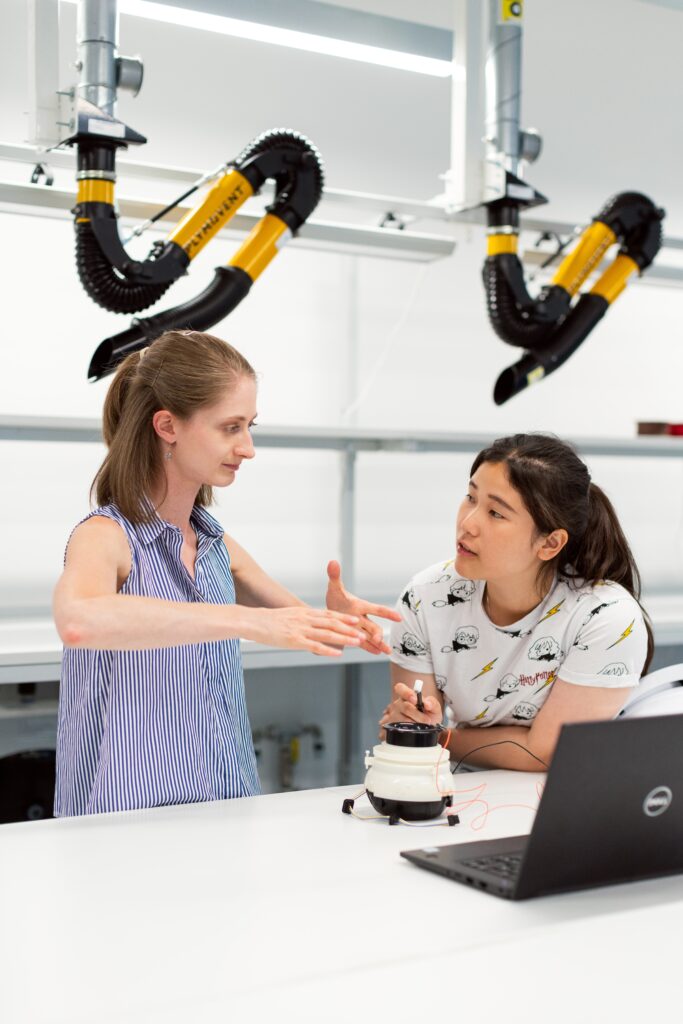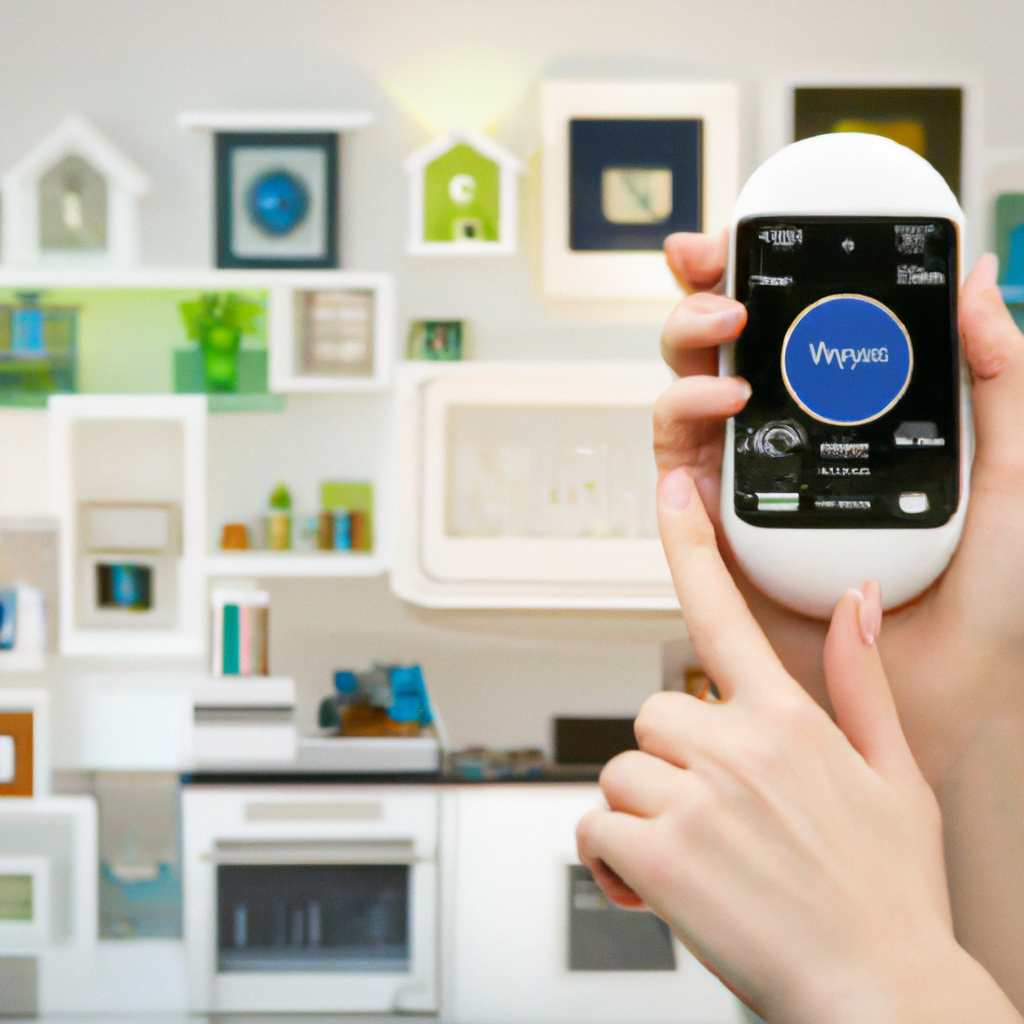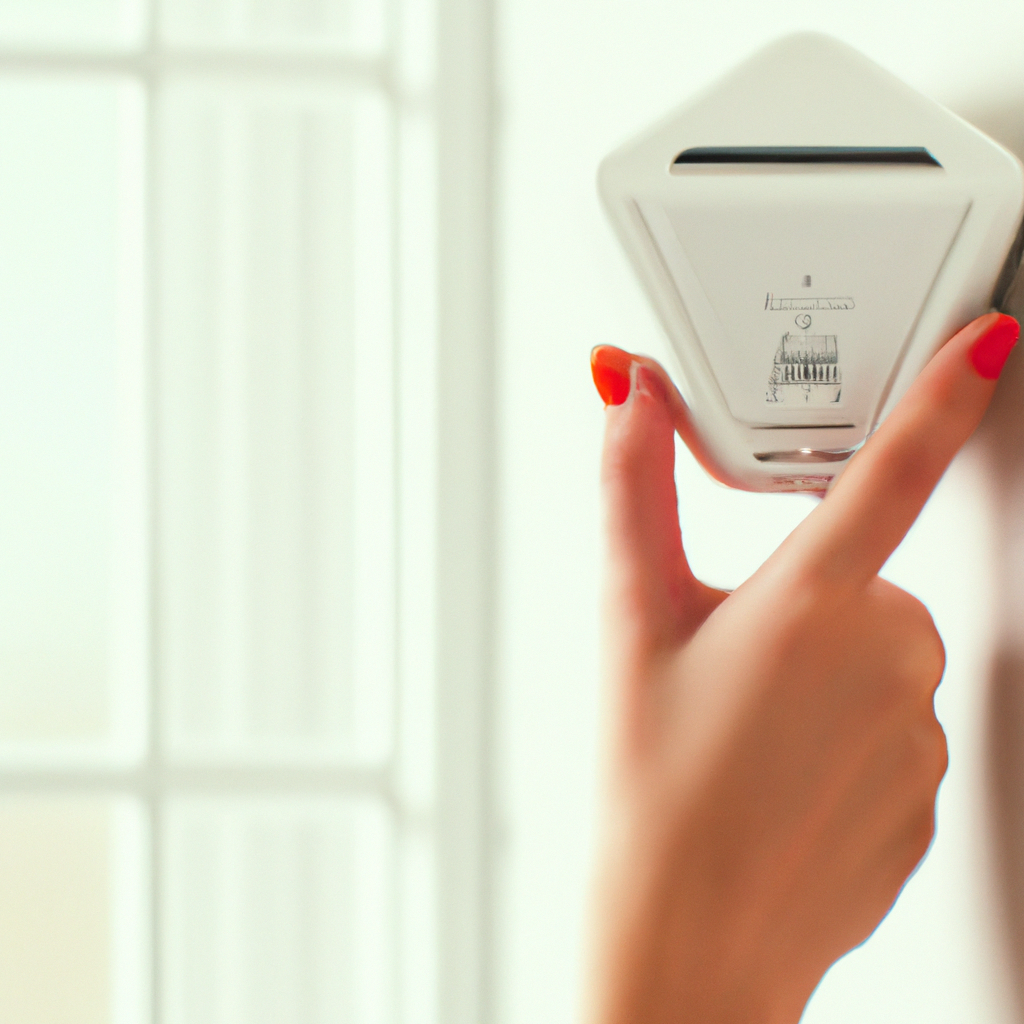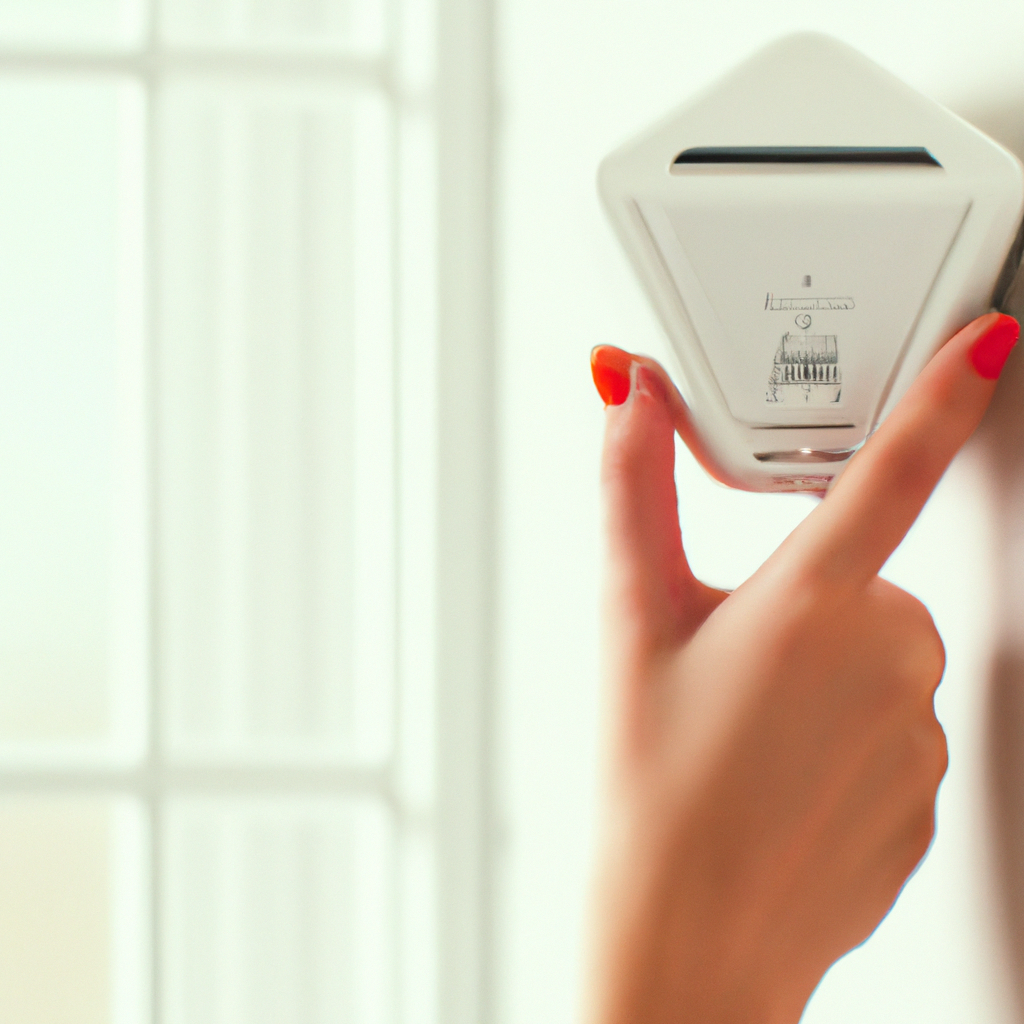Imagine living in a home where everything can be controlled effortlessly with just a tap on your smartphone or through your voice commands. Smart home technology is revolutionizing the way we live, making our lives more convenient and comfortable than ever before. From adjusting the temperature of your home while you’re still at the office to unlocking your front door for a friend while you’re on vacation, the possibilities are endless. With intuitive systems that learn your preferences and automate your home’s functions, you’ll never have to worry about the little details again. Experience the future of living with smart home technology, where convenience and comfort are at your fingertips.
Smart Home Technology
Definition
Smart home technology refers to the integration of various devices and systems within a household to create an automated and interconnected environment. This technology allows homeowners to control and monitor different aspects of their home remotely, making daily tasks more convenient and comfortable.
Components of a smart home
A smart home consists of several components that work together to create a seamless and efficient living space. These components include smart devices such as thermostats, locks, cameras, appliances, and lighting systems. Additionally, smart hubs and virtual assistants enable interconnectivity and control of these devices through voice commands or mobile applications.
Evolution of smart home technology
Smart home technology has come a long way in recent years, evolving from simple automation to highly sophisticated and interconnected systems. Initially, smart home technology was limited to basic tasks such as turning lights on and off remotely. However, advancements in wireless connectivity, sensor technology, and artificial intelligence have transformed smart homes into comprehensive ecosystems that enhance convenience, safety, energy efficiency, and entertainment.
Enhanced Convenience
Home automation
The core feature of smart home technology is automation, which allows homeowners to control various tasks and devices without manual intervention. From adjusting the temperature to setting the lighting ambiance, automation simplifies daily routines and provides a higher level of convenience. With automated routines, you can schedule appliances and devices to turn on or off at specific times, ensuring that your home is ready for your arrival or adjusts to your lifestyle.
Voice control
One of the most popular and user-friendly features of smart home technology is voice control. By integrating virtual assistants like Amazon Alexa or Google Assistant, you can effortlessly control various devices in your home using simple voice commands. Whether it’s dimming the lights, playing your favorite music, or checking the weather, voice control adds a new level of ease to your daily tasks.
Remote access
The ability to access and control your smart home remotely is a significant advantage. Whether you’re at work or on vacation, you can monitor and control your home appliances, security cameras, and other devices using dedicated mobile applications. This feature ensures that you have complete control over your home, providing peace of mind and enabling you to make adjustments anytime, anywhere.
Smart appliances
Smart appliances, such as refrigerators, ovens, washing machines, and even coffee makers, contribute to the comfort and convenience of a smart home. These appliances can be programmed to perform specific tasks or provide notifications when maintenance is required. For example, a smart refrigerator can send notifications about low stock items, helping you stay organized and saving you trips to the grocery store.

Improved Safety and Security
Smart locks
Smart locks offer enhanced security by replacing traditional door locks with digital alternatives. These locks can be unlocked using a keypad, smartphone, or even your fingerprint. With smart locks, you can remotely grant access to visitors, contractors, or family members and receive notifications whenever someone enters or leaves your home. Additionally, smart locks can integrate with other security systems, providing comprehensive protection for your home.
Smart cameras
Smart cameras play a vital role in improving the safety and security of your home. With high-definition video capabilities, motion detection, and real-time monitoring, smart cameras provide a reliable surveillance system. These cameras can send notifications to your smartphone when they detect any suspicious activity, allowing you to take immediate action or alert authorities.
Smoke and carbon monoxide detectors
Smart smoke and carbon monoxide detectors provide an added layer of safety by detecting potential threats and alerting homeowners before it’s too late. These detectors can send alerts to your smartphone, ensuring that you are aware of any emergencies, even if you’re not at home. By integrating with other smart devices, they can automatically shut off HVAC systems to prevent the spread of smoke or trigger emergency lighting.
Leak detection systems
Water leaks can cause significant damage and costly repairs. Smart leak detection systems use sensors placed in vulnerable areas, such as under sinks or near water heaters, to detect leaks early on. When a leak is detected, you receive an instant notification, allowing you to take immediate action and prevent further damage. Some systems can even automatically shut off the water supply to minimize the impact of a leak.
Energy Efficiency
Smart thermostats
Smart thermostats are an essential component of energy-efficient homes. These devices learn your heating and cooling preferences over time and automatically adjust the temperature based on your needs and schedule. With the ability to control your thermostat remotely, you can optimize energy usage while ensuring comfort. Smart thermostats also provide detailed energy usage reports, helping you identify opportunities for further efficiency improvements.
Energy monitoring
Energy monitoring systems enable homeowners to track and analyze their energy consumption in real-time. By providing detailed insights and usage breakdowns, these systems help you identify energy-hungry appliances or habits, allowing you to make informed decisions about reducing consumption. Some energy monitoring systems can even suggest energy-saving tips to improve efficiency and reduce utility bills.
Automated lighting
Smart lighting systems offer energy efficiency and convenience by allowing you to control your lights remotely or through automated routines. By scheduling when lights are on or off, dimming them when needed, or detecting occupancy to turn lights on or off, you can save energy while enhancing your living experience. With motion sensors and ambient light detection, your lights can adapt to your needs, providing adequate illumination while minimizing wasted energy.
Smart blinds
Smart blinds or shades integrate with your smart home system to provide energy-saving benefits. These automated window coverings can be programmed to open, close, or adjust based on sunlight intensity, time of day, or your preferences. By blocking or allowing natural light, smart blinds enhance energy efficiency by reducing the need for artificial lighting and minimizing heat gain or loss, depending on the season.

Health and Wellness
Smart beds
Sleep is crucial for overall health and well-being, and smart beds are designed to optimize your sleep experience. These technologically advanced mattresses or sleep systems monitor your sleep patterns, body movements, and heart rate to provide personalized insights and suggestions for better sleep. Some smart beds can even adjust mattress firmness or elevate specific areas to provide maximum comfort and relieve pressure points.
Air quality monitoring
Indoor air quality significantly impacts our health. Smart air quality monitoring systems continuously monitor and analyze various air pollutants, including volatile organic compounds (VOCs), carbon dioxide, and particulate matter. By providing real-time data and alerts, these systems enable you to take measures to improve air quality, such as adjusting ventilation, using air purifiers, or identifying potential sources of pollution.
Smart appliances in the kitchen
Smart appliances in the kitchen revolutionize the way we prepare and cook meals. From smart refrigerators with built-in cameras that allow you to see inside without opening the door to smart ovens that can be preheated and controlled remotely, these appliances provide convenience and enhance the cooking experience. Some smart appliances can even suggest recipes, adjust cooking times and temperatures, and monitor food freshness.
Home gym integration
For those who value health and fitness, smart home technology has expanded to include integration with home gym equipment. Smart gym systems offer personalized workout routines, track your progress, and provide real-time feedback on your form and technique. By integrating with wearable fitness devices or fitness apps, these systems provide a holistic approach to health and wellness, helping you stay motivated and achieve your fitness goals.
Entertainment and Recreation
Smart TVs and streaming devices
Smart TVs and streaming devices have revolutionized home entertainment, offering access to a vast array of streaming services, apps, and online content. By connecting to the internet, these devices provide seamless access to popular video platforms, music streaming services, and social media applications. With voice control integration and the ability to cast content from your smartphone or tablet, smart TVs ensure you have an immersive entertainment experience.
Multi-room audio systems
Whether you’re hosting a party or simply want to enjoy your favorite music throughout your home, multi-room audio systems provide a solution. These systems allow you to stream music wirelessly to different rooms simultaneously or individually control each area’s audio. With access to streaming services or your personal music library, you can create customized playlists and enjoy high-quality audio wherever you are in your home.
Gaming integration
Gaming enthusiasts can take their gaming experience to the next level with smart home technology integration. Many gaming consoles support smart home connectivity, allowing you to control your lights, adjust your thermostat, or even trigger special effects in your room based on the game you’re playing. This integration adds an immersive element to gaming, enhancing the overall experience and creating a more realistic environment.
Smart pool and outdoor entertainment
Smart home technology encompasses not only the interior but also the exterior of your home. For those with pools or outdoor entertainment areas, smart pool systems offer convenient control and monitoring. These systems can automate pool maintenance tasks, adjust water chemistry, monitor water levels, and control pool lighting and heating. With smart outdoor speakers and lighting, you can create a perfect atmosphere for outdoor gatherings or relaxing evenings by the pool.

Convenience in Daily Tasks
Automated cleaning
Smart cleaning devices, such as robot vacuum cleaners and robotic mops, take the hassle out of cleaning floors. These devices can be programmed to clean specific areas of your home at scheduled times or controlled remotely through smartphone applications. By navigating your home autonomously and using sensors to avoid obstacles, they efficiently clean your floors, saving you time and effort.
Smart laundry
Smart laundry appliances provide added convenience in taking care of your laundry. They can be controlled remotely, allowing you to start or stop cycles, monitor progress, and receive notifications when the laundry is done. Some smart washers and dryers can even automatically adjust water levels or drying times based on load size or fabric type. By optimizing energy efficiency and providing remote control, smart laundry appliances make laundry tasks more manageable.
Virtual assistants
Virtual assistants, such as Amazon Alexa, Google Assistant, or Apple Siri, have become an integral part of many smart homes. These voice-activated assistants can perform various tasks, including answering questions, setting reminders, providing weather updates, or controlling smart devices through voice commands. With virtual assistants, you can access information and control your home without lifting a finger, making daily tasks more convenient and efficient.
Grocery management
Managing groceries and meal planning can be a daunting task, but smart home technology can simplify the process. Smart refrigerators equipped with cameras and inventory management systems allow you to see what’s inside your fridge, create shopping lists, and even place grocery orders from your favorite stores. With the ability to track expiration dates and receive notifications when items are running low, you can efficiently manage your grocery shopping and reduce food waste.
Connectivity and Integration
Interconnectivity of devices
One of the strengths of smart home technology is its ability to integrate different devices and systems seamlessly. Whether it’s connecting your smart thermostat to your security system or linking your smart lights with your entertainment system, interconnectivity ensures a cohesive and intuitive user experience. By sharing data and communicating with each other, smart devices work together to provide advanced automation and control.
Smart hubs
Smart hubs act as the central control point for all the devices in your smart home. These devices consolidate communication and allow you to control various devices through a single interface. With a smart hub, you can integrate devices from different brands and protocols, ensuring compatibility and easy management. From managing routines to receiving notifications, smart hubs provide a unified experience that simplifies the control of your smart home.
Compatibility with other technologies
Smart home technology is designed to be compatible with a wide range of other technologies, ensuring that you can seamlessly integrate your smart devices with existing systems or future upgrades. Compatibility with Wi-Fi, Bluetooth, Zigbee, or Z-Wave protocols allows for easy connectivity with a variety of devices. This compatibility enables homeowners to expand their smart home capabilities and integrate with emerging technologies as they become available.
Integration with smart cities
Smart home technology is not limited to the confines of your dwelling; it can also integrate with larger smart city initiatives. By connecting with municipal networks or participating in demand-response programs, your smart home can contribute to energy efficiency at a broader scale. Integration with smart city infrastructure provides opportunities for efficient resource utilization, optimized transportation, and improved sustainability.

Privacy and Data Security
Potential risks
As with any technology that collects and processes personal information, there are potential risks associated with smart home technology. These risks include unauthorized access to devices or data, data breaches, or misuse of personal information. However, by following best practices in data security and privacy protection, such as using strong passwords, enabling encryption, and keeping devices and software up to date, you can minimize the potential risks.
Data encryption
Data encryption plays a crucial role in securing data transmitted between smart devices and cloud-based platforms. By encrypting data using advanced algorithms, sensitive information remains protected even if intercepted. Encryption ensures that only authorized individuals or devices can access and decrypt the data, providing an additional layer of security for smart homes.
User authentication
To prevent unauthorized access to smart home systems, user authentication mechanisms are implemented. These mechanisms typically include passwords, biometric authentication, or two-factor authentication. By requiring a unique identifier from the user before granting access, smart home devices and applications ensure that only authorized individuals can control and monitor the home environment.
Securing networks
Securing your home network is essential to protect your smart home devices and data. By using strong passwords for your Wi-Fi network, enabling firewalls, and keeping your router’s firmware up to date, you can prevent unauthorized access to your network. Additionally, isolating your smart home devices on a separate network or using a virtual private network (VPN) can further enhance security and ensure privacy.
Affordability and Accessibility
Cost-effectiveness
While smart home technology was once considered a luxury, it has become more affordable and accessible over time. The increasing popularity of these devices and advancements in technology have contributed to lower prices. Additionally, the potential energy savings provided by smart home components can lead to reduced utility bills, offsetting the initial investment in these devices.
Availability of smart devices
Smart home devices and systems are widely available today, both online and in physical stores. From major retailers to specialized home improvement stores, you can find a wide range of smart devices to fit your needs and budget. Additionally, the variety of brands and models ensures that you can choose the devices that integrate seamlessly into your existing home infrastructure.
Ease of installation and use
Most smart home devices are designed with ease of installation and use in mind. Many devices require minimal setup, with installation often involving simple tasks such as connecting to Wi-Fi or pairing with a smartphone. Manufacturers also provide detailed instructions and customer support to guide you through the process. Once installed, smart home devices typically have intuitive interfaces and are easy to control through mobile applications or voice commands.
Adaptability for different lifestyles
Smart home technology is highly adaptable and can be customized to fit different lifestyles and preferences. Whether you live alone, have a family, or have specific needs, smart home devices can be tailored to provide convenience, safety, and comfort. From automating daily tasks to accommodating individual routines, smart home technology adapts to your lifestyle, ensuring that you can make the most of its features and benefits.
In conclusion, smart home technology offers a wide range of benefits that enhance convenience and comfort in our daily lives. From streamlining daily tasks through automation and remote access to improving safety, energy efficiency, and entertainment, smart home technology has evolved to meet the needs of modern homeowners. With a focus on privacy, data security, and affordability, smart homes have become a viable option for anyone looking to create a more convenient and comfortable living environment.











